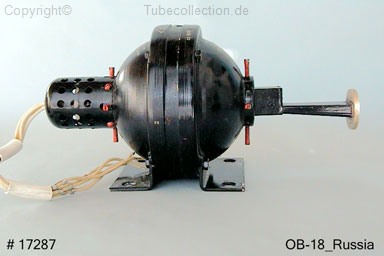|
Geschichte: Rückwärts-Wellen-Oszillatoren dienen der Erzeugung extrem hoher Frequenzen und Wellenlängen bis unter 1mm. (Terrahertz-Bereich). Entwickelt wurden sie bereits 1950, gebaut an 1960. Gegenüber Klystrons und Magnetrons haben sie den Vorteil eines extrem breit einstellbaren Frequenzbereiches. Funktion: Ein BWO besteht aus 3 Teilen: - der
Elektronenkanone Beim BWO durchläuft der durch einen starken Magneten gebündelte Elektronenstrahl eine Kette von resonatorahnlichen Elementen und regt dabei eine Welle an, die entgegen der Elektronenstrahlrichtung den Oszillator verlässt. Durch Veränderung der Anodenspannung lässt sich die Frequenz verstellen. Anwendung: Gebraucht wird so etwas in der wissenschaftlichen Forschung, u.a. in der Spektroskopie und in militärischen Bereichen. |
History:
Backward-wave
oscillators are used
to generate extremely
high frequencies and
wavelengths to below
1mm.
(Terahertz
range). Function: A BWO consists of 3 parts:
-
The electron gun
In
a BWO
passes
an
electron beam,
focused
a strong magnet, elements
and a chain of
resonatorahnlichen
excited
thereby
to a shaft,
the opposite
direction
of the
electron beam
leaving the
oscillator. The frequency is adjustable by varying the anode voltage Usage: BWO are used in the scientific research, etc. in spectroscopy and in military areas.
|
| Hier einige Links zur Vertiefung:
Here are some Links to learn more about: http://hf.tf.uni-kiel.de/en/home-forschung-molekuel.htm http://www.chem.ualberta.ca/~jaeger/research/thz/thz_techniques.htm http://accelconf.web.cern.ch/accelconf/e08/papers/mopd035.pdf |
| Typen / Types: CSF France: CO 515, http://tubedata.milbert.com/sheets/181/f/F4028A.pdf WF: HRO 201, 301, 401, 701, 1101, 1201, Varian: VBR-7501J, russische Typen weiter unten!
rot = Röhre + Foto eingebaut / red = tube in collection +
picture on Website |
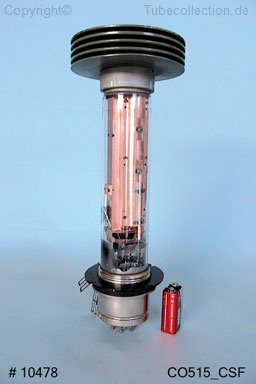 |
||
| CO 515 CSF |
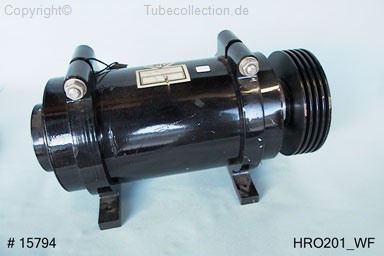 |
Die HRO201 ist eine Rückwärtswellen-Oszillatorröhre (Carcinotron) mit einem Frequenzbereich von 980...2100 MHz. Sie wurde als Nachbau der RWO1 im Oberspreewerk Berlin (OSW, HF, WF) hergestellt und ist als Generatorröhre für den Einsatz in Messgeräten vorgesehen. |
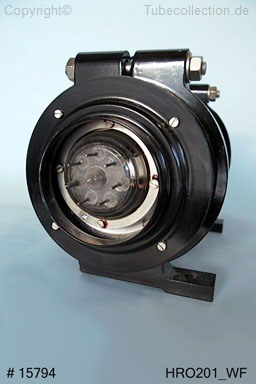 |
| HRO 201 WF |
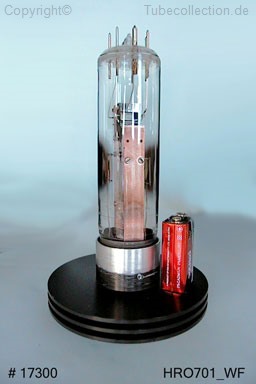 |
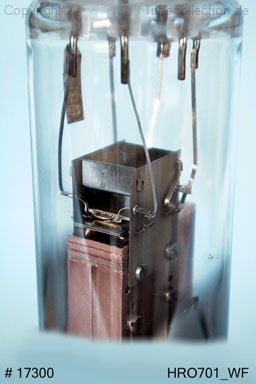 |
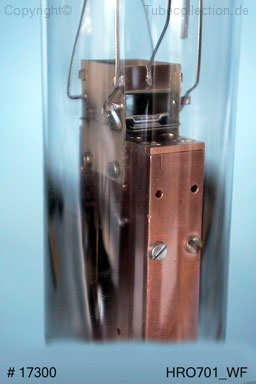 |
| HRO 701 WF |
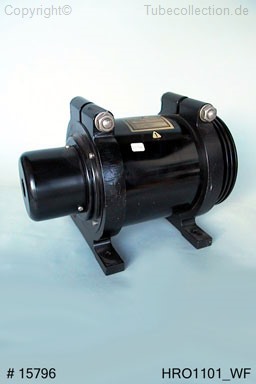 |
Die HRO1101 ist
eine Rückwärtswellen-Oszillatorröhre (Carcinotron) mit einem
Frequenzbereich von 7000...11000 MHz. Sie wurde als Nachbau der RWO5 im Oberspreewerk Berlin (OSW, HF, WF) hergestellt und ist für den Einsatz in Messgeräten als Generatorröhre vorgesehen. |
|
| HRO 1101 WF |
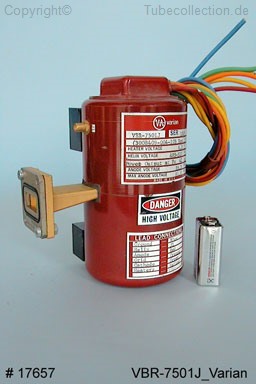 |
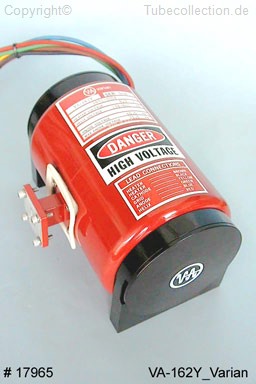 |
|
| VBR-7501J Varian | VA-162Y Varian |
|
Russische BWO`s |
Russian BWO`s In 1933, in a former silk-weaving manufactory was founded the Radiolampa plant . Since that time Fryazino became the center of the Soviet electronics industry. Fryazino is a center of the Russian microwave elctronics. Fryazino (Фрязино) is a scientific town located on the Lyuboseyevka River, 25 kilometers northeast of the city of Moscow. The first Research Institute SRI-160 (its modern name is Federal State Unitary Enterprise RPC "Istok") was founded in Fryazino in 1943. Adress: FSUERPC “Istok” Voksalnaya 2a, 141190 Fryazino, Russia The Branch of the "Institut of Radio-Engineering and Electronics" was founded in Fryazino in 1955. |
Typen / Types: russische Typen, kyrillisch gelistet. OB=OV, OBC=OVS OB-18, OBC-5, OBC-14Б, OBC-27Б, OBC-28A, УMИ-201,
rot = Röhre + Foto eingebaut / red = tube in collection +
picture on Website |
|
|
Das Austrittsfenster hat einen Querschnitt von 18x9 mm. Mit den roten Schrauben wird die Röhre mittig zum Magnetfeld ausgerichtet. Vorsicht: Der Magnet ist extrem stark. |
| OB-18 |
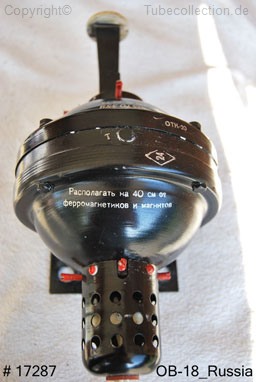 |
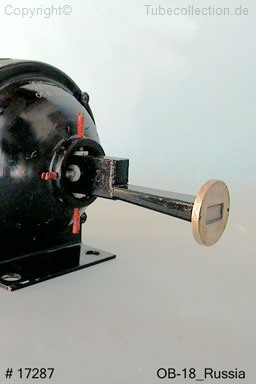 |
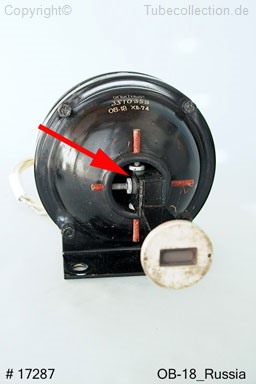 |
|
Alle russischen BWO wurden hergestellt von: |
All russian BWO were produced at |
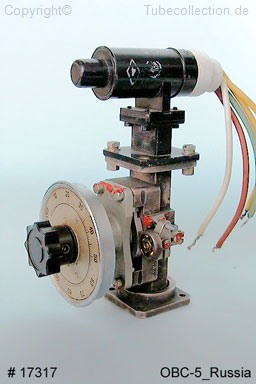 |
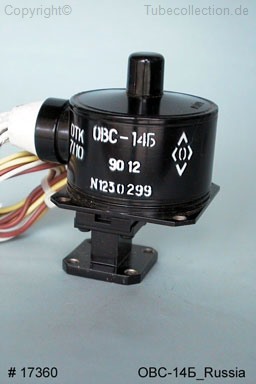 |
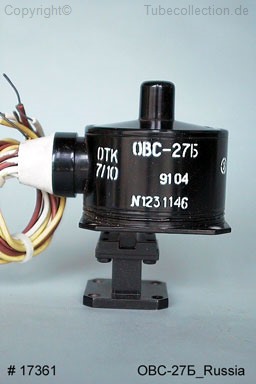 |
| OBC-5 Russia | OBC-14Б | OBC-27Б |
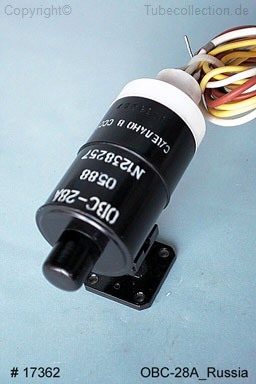 |
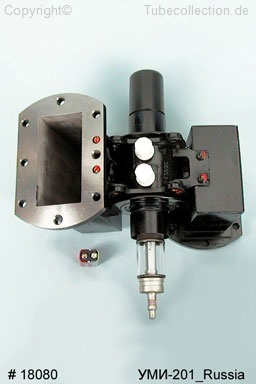 |
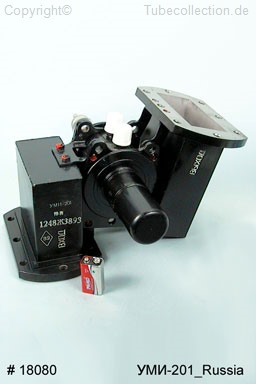 |
| OBC-28A | УMИ-201 | УMИ-201 |
|
Function of УMИ-201
One of the ends is a removable cover. Under it will be a coax
connection for the heater / cathode. The ground (anode/resonator) is
the body of the tube. It takes high voltage pulses between the
cathode & body. Also this one will need mounting in a magnetic field.
It is a magnetron based amplifer (crossed field amplifier). The
electron cloud is formed much the same way as in a magnetron,
bunches synchronize with the field impressed on the slow wave
structure in the anode and amplification occurs. The gain is usually
low - 18db is a high gain tube - but these are also transparent when
powered down - RF can pass from the input to the output with little
attenuation. this has several uses - the tube can sit dormant and be
used only when it is desired to have more output from a radar -
without needing any changes in connections - also there is a
redundancy feature where a number of these tubes can be put in
series in the output - if one should fail, it is switched off and
the next one in line powered up. Allows for a robust output stage in
the radar that can fail several times without loss of radar
functionality. Ive only ever heard of a couple of amplitrons in a
row for redundancy but I guess you could have more. |
